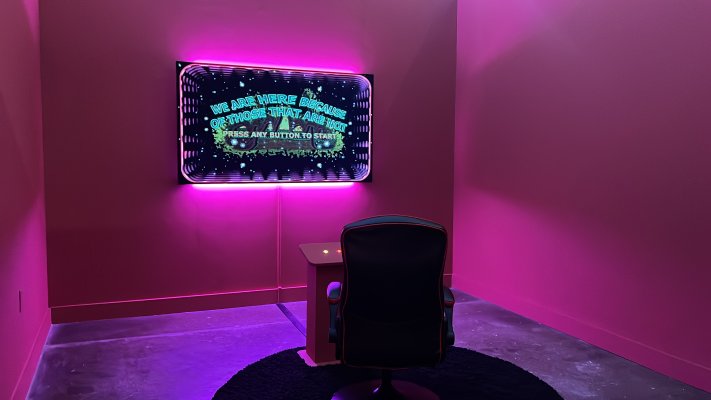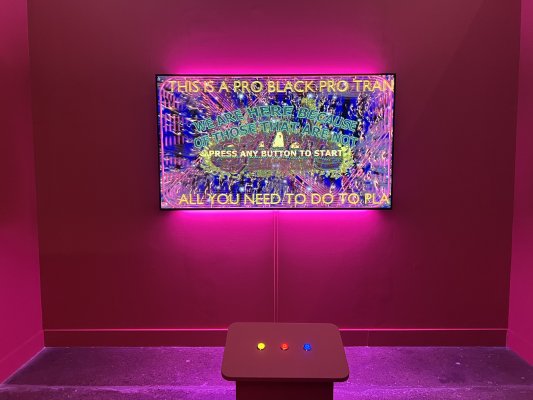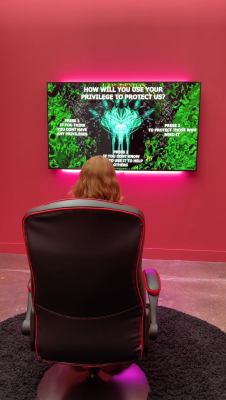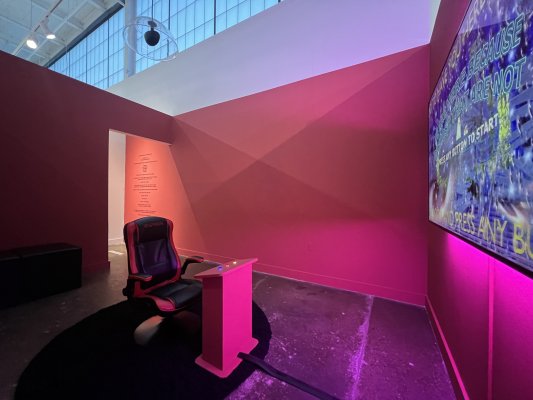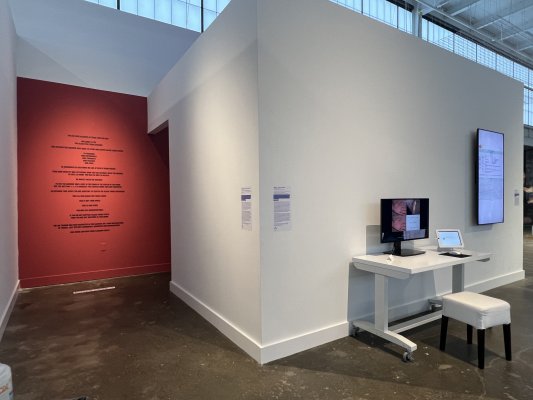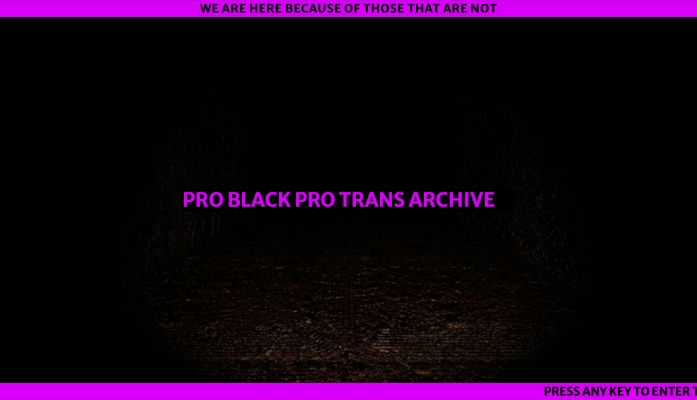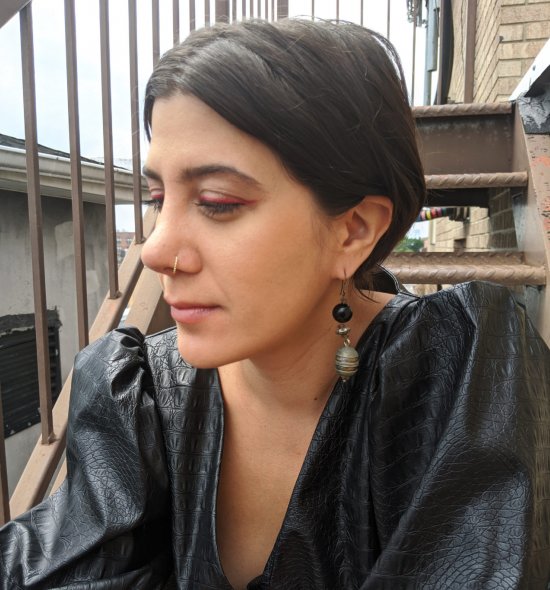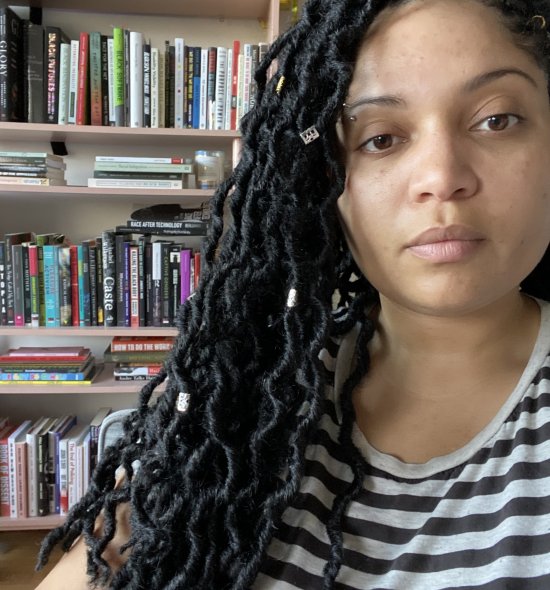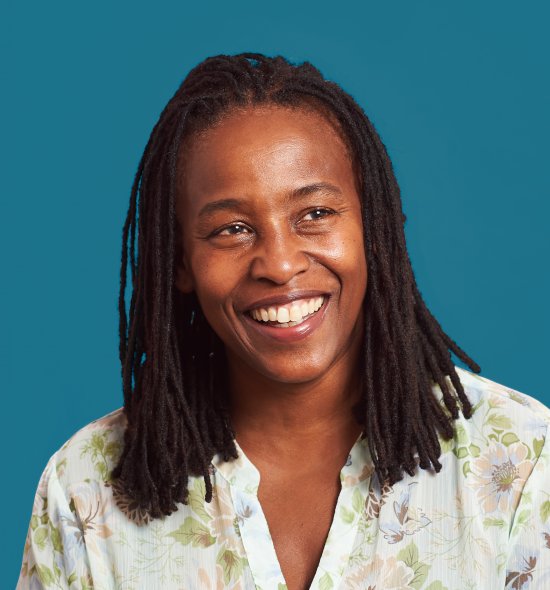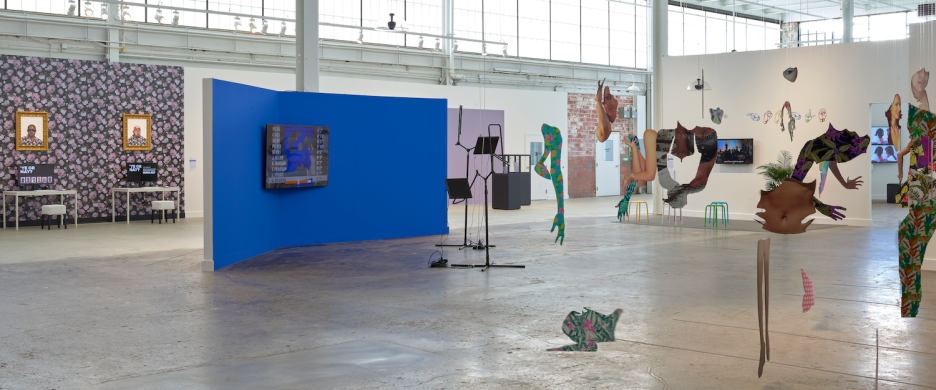WE ARE HERE BECAUSE OF THOSE THAT ARE NOT, 2020
Digital game displayed on projector; gaming chair; pink lights; and vinyl text
Courtesy of the artist
“A lot of my practice is about archiving. It’s about working with Black trans people who are not artists, and allowing them the space to be remembered, and also to generate and create things that they’re not usually able to. That doesn’t just stem from telling the stories, but also from building the tools so that the story can be told.”
—Danielle Brathwaite-Shirley
At the beginning of this game by Danielle Brathwaite-Shirley (she/her/hers), you are asked to identify whether you are “Black and Trans,” “Trans,” or “Cis” (meaning you are cis-gendered, or identify with the gender you were assigned at birth). Depending on your answer, your path forks: Black trans people are invited to join a community of lost ancestors; non-Black trans people are encouraged to use their relative privilege to support Black trans people; and cis-gendered people are confronted with a “security feature” that blocks “trans tourism,” followed by opportunities to learn about being an ally.
With its non-graphical interface, WE ARE HERE BECAUSE OF THOSE THAT ARE NOT recalls the text-based games that emerged in the 1970s, which invited players to enter virtual worlds through their imagination instead of their eyes. Although this game also includes imagery, it is highly stylized, avoiding the stereotypical reduction of Black trans people to either fetishes or victims of trauma: all of the figures are semi-abstract digital avatars who speak and sing with auto-tuned voices as they float in liquid landscapes, resisting the transformation of Black trans lives into spectacle. Made in collaboration with other Black trans women, the game demonstrates how a community can create its own digital tools to imagine new bodies, create spaces, forge connections, and archive histories on its own terms.
This game is also freely available for you to experience on your own devices by visiting blacktransarchive.com.

